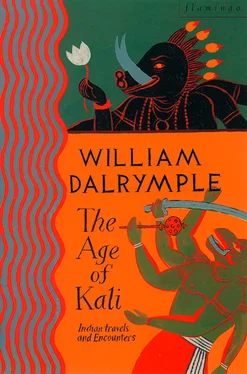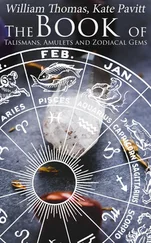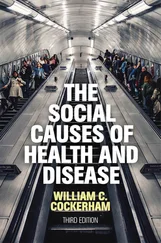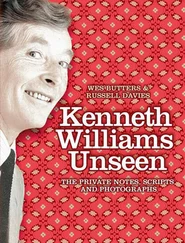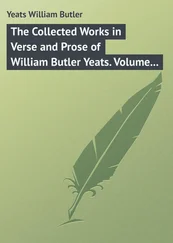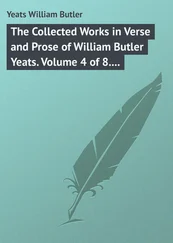The Age of Kali
Indian Travels & Encounters
William Dalrymple
To JOCK
who saw the point long before I did
Cover Page
Title Page The Age of Kali Indian Travels & Encounters William Dalrymple
Dedication To JOCK who saw the point long before I did
Introduction
1 The Age of Kali
The Age of Kali
In the Kingdom of Avadh
The City of Widows
Warrior Queen: The Rajmata of Gwalior
East of Eton
2 In Rajasthan
The Sad Tale of Bahveri Devi
Caste Wars
Sati Mata
3 The New India
Two Bombay Portraits
Finger-Lickin’ Bad: Bangalore and the Fast-Food Invaders
4 The South
At the Court of the Fish-Eyed Goddess
Under the Char Minar
Parashakti
5 On the Indian Ocean
At Donna Georgina’s
Up the Tiger Path
The Sorcerer’s Grave
6 Pakistan
Imran Khan: Out for a Duck
On the Frontier
Blood on the Tracks
Benazir Bhutto: Mills & Boon in Karachi
Glossary
Index
By the same author
Copyright
About the Publisher
The Age of Kali is a collection of peripatetic essays, a distillation of ten years’ travel around the Indian subcontinent. For six of those years I was based in Delhi working on my second book, City of Djinns , while for the other four I wandered the region, on a more nomadic basis, for a few months each year. My travels took me from the fortresses of the drug barons of the North-West Frontier to the jungle lairs of the Tamil Tigers; from flashy Bombay drinks parties to murderous Bihari blood feuds; from the decaying palaces of Lucknow to the Keralan exorcist temple of the bloodthirsty goddess Parashakti, She Who is Seated on a Throne of Five Corpses. All the pieces are the product of personal experience and direct observation.
The book’s title is a reference to the concept in ancient Hindu cosmology that time is divided into four great epochs. Each age (or yug ) is named after one of the four throws, from best to worst, in a traditional Indian game of dice; accordingly, each successive age represents a period of increasing moral and social deterioration. The ancient mythological Golden Age, named after the highest throw of the dice, is known as the Krita Yug , or Age of Perfection. As I was told again and again on my travels around the subcontinent, India is now in the throes of the Kali Yug , the Age of Kali, the lowest possible throw, an epoch of strife, corruption, darkness and disintegration. In the Age of Kali the great gods Vishnu and Shiva are asleep and do not hear the prayers of their devotees. In such an age, normal conventions fall apart: anything is possible. As the seventh-century Vishnu Purana puts it:
The kings of the Kali Yug will be addicted to corruption and will seize the property of their subjects, but will, for the most part, be of limited power, rising and falling rapidly. Then property and wealth alone will confer rank; falsehood will be the only means of success in litigation. Corruption will be the universal means of subsistence. At the end, unable to support their avaricious kings, the people of the Kali Age will take refuge in the chasms between mountains, they will wear ragged garments, and they will have too many children. Thus in the Kali Age shall strife and decay constantly proceed, until the human race approaches annihilation.
In my travels in Pakistan and North India there were moments when it seemed as if the Kali Yug really was upon us. In the bandit-infested badlands north of Lahore, in Bihar and in parts of eastern Uttar Pradesh I found an ancient landscape overwhelmed by rapid change, where the old certainties and the ancient social order had been swept away, but where the new order had yet to fully establish itself. In Lucknow I witnessed a war being fought between rival wings of the student union, where each side was armed with grenades and assault rifles; in neighbouring Bihar, it seemed as if the state had finally succumbed to the tidal wave of violence, corruption and endemic caste warfare that had engulfed it. Indeed things were so bad that the criminals and the politicians of the state were said to be virtually interchangeable, and the government had pretty well given up any pretence of providing water, electricity or even a semblance of security. The state had given way, and Bihar now seemed to be approaching a situation of pure anarchy.
According to the Puranas , the Kali Yug is the last age before the world is destroyed by the ‘fire of one thousand suns’, after which the cycle reaches its conclusion and time momentarily stops, before the wheel turns again and a new cycle begins. Rather ominously, the very week I decided on The Age of Kali as the title for this book, Atal Behari Vajpayee, India’s first BJP Prime Minister, let off his ‘Hindu’ nuclear bomb at Pokhran, in what some in India have seen as a sign that the Kali Yug is now approaching its apocalyptic climax.
Following the blast, as ecstatic crowds filled the streets to celebrate – and as some BJP activists set about trying to build a Hindu shakti temple on the site of the explosion – several Indian papers quoted the lines from the Gita uttered by Robert Oppenheimer as he witnessed the first nuclear explosion at Alamogordo in 1945:
If the radiance of a thousand suns
Were to burst at once into the sky,
That would be like the splendour of the Mighty One …
I am become Death,
The shatterer of worlds.
Yet for all this, India has consistently defied those who make prophecies of doom for her, and sure enough, outside Pakistan and the Ganges basin, in parts of the Deccan and southern India, I saw a world where notions of a Kali Yug seemed to have little relevance. In the far south and west of the country, despite occasional political upheavals in Tamil Nadu, there was a quiet but growing prosperity and stability that defied the grim predictions of imminent apocalypse being made in Patna and Lucknow. The great question for India now, it seems to me, is whether the prosperity of the south and west of the country can outweigh the disorder and decay which is spreading out from Bihar and the north.
This book covers so many sensitive areas that it is bound to raise a few cries of protest and dissent, particularly from Indians understandably touchy about criticism from abroad; but it is a work of love. Its subject is an area of the world I revere like no other, and in which I have chosen to spend most of my time since I was free to make that choice. From my first visit to the region as an eighteen-year-old backpacker, I was completely overwhelmed: India thrilled, surprised, daunted and excited me. Since then it has never ceased to amaze; and I hope that that ceaseless power to delight and astonish, if nothing else, is conveyed by this book.
Over the course of the last decade, I have fallen in to the debt of many friends across the length and breadth of the subcontinent. There are, after all, few areas where people are so ready to open their house to the weary and confused traveller. I would like to thank the following, all of whom provided invaluable aid, advice and hospitality: Javed Abdulla, Ram Advani, Bilkiz Alladin, S.K. Bedi, Dev Benegal, David and Rachna Davidar, Farid Faridi, Sagarika Ghosh, Salman, Kusum and Navina Haidar, Sultana Hasan, Annie and Martin Howard, Mir Moazam Husain and the Begum Mehrunissa, General Wajahat Husain, Dr S.M. Yunus Jaffery, O.P. Jain, Nussi Jamil, Amrita Jhaveri, Gauri and David Keeling, Sunita Kohli, Momin Latif, Dieter Ludwig, Suleiman Mahmudabad, Sam and Shireen Miller, Sachin, Sudhir and Rosleen Mulji, Mushtaq Naqvi, Saeed Naqvi, Mark Nicholson, Naveen Patnaik, Ahmed and Angie Rashid, Arundhati Roy and Pradip Krishen, Yusouf Salahuddin, Arvik Sarkar, Vasu Scindia, Aradhana Seth, Jugnu and Najam Sethi, Balvinder Singh, Khuswant Singh, Magoo and Jaswant Singh, Mala and Tejbir Singh, Siddarth and Rashmi Singh, Mohan Sohai, Jigme Tashi, Tarun and Gitan Tejpal, Tiziano and Angela Terzani, Adam and Fariba Thomson, Mark Tully and Gillian Wright, Dr L.C. Tyagi, Shameem Varadrajan, and Pavan and Renuka Verma. I would like to give particular thanks to Sanjeev Srivastava, who accompanied me on all the Rajasthan stories and provided brilliant insights into the life of that state. Arvind Das gave me invaluable help with the Bihar story, which was very much inspired by his superb study of the state,
Читать дальше
